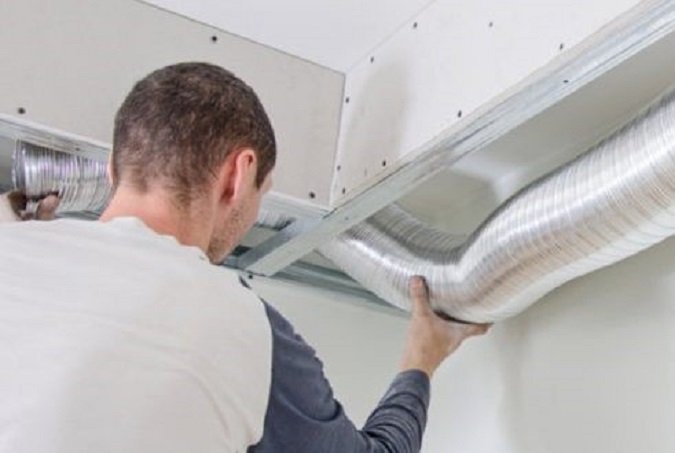
Indoor gardeners are continually looking for ways to make their gardens more efficient. During the winter months, some growers are taking advantage of the excess heat produced by their indoor gardens and recycling that heat back into a home, greenhouse, or another indoor garden. After all, it seems like such a waste to evacuate the excess heat from an indoor garden while at the same time paying money to heat a home or greenhouse. In many cases, a simple redirection of the indoor garden’s exhaust port can provide some supplemental heat to an area that needs it. This is most commonly done by connecting a piece of ducting from the garden’s exhaust to the desired location. There are a few different ways an indoor gardener can recycle the heat from their indoor garden, but a few considerations must be made before committing to setting up a heat recycling system. A closer look at when and how to recycle heat from an indoor garden will help you decide which, if any, of the possible configurations will work best for your situation.
Recycling Heat into the Home
It seems counterproductive to exhaust heat from the indoor garden while paying to provide heat to other parts of the home. Unfortunately, fuel prices continue to rise which means that heating a home is never going to become cheaper. Any gardener who utilizes artificial lighting within an indoor garden will benefit from heat recycling. However, before jumping on the heat recycling band wagon, a grower should assess their garden to see how compatible it is for heating a living space.
The Best Type of Indoor Garden for Heat Recycling
Some indoor gardens are simply more compatible with heat recycling than others. An indoor garden with a closed air-cooled reflector ventilation system is the best choice for heat recycling into the home. A closed system does not exhaust any air from the actual garden space but instead takes fresh air from outside the garden and draws it through the lighting fixture which, in turn, cools the lighting fixture. The air passing over the bulbs becomes heated and this heated air is then normally exhausted outside. The heated air from a closed air-cooled reflector ventilation system is free of excess humidity and any pesticide or fertilizer odors that are found within the garden space.
As you can probably imagine, a garden without a closed ventilation system may not be as ideal for recycling heat into a living space. When recycling heat from an indoor garden without a closed ventilation system, it is a good idea to pass the air through a carbon filter prior to bringing it into the home. The carbon filter will remove the VOCs (volatile organic compounds, aka odors from fertilizers) so they do not enter the living space. However, a carbon filter will not remove all the active chemicals from the pesticides or the humidity created by the plants. Gardeners who use harsh chemical pesticides should forego heat recycling altogether and avoid the risk of bringing toxic chemicals into the living space. Excess humidity from an indoor garden is usually not a huge concern during the winter months. In fact, some gardeners may even welcome the addition of a little humidity during the otherwise dry winter months.
Distance for the Exhaust
Another consideration when setting up a heat recycling ventilation system is the overall length of the exhaust ducting. The longer the duct run is, the more resistance it has, and therefore, the more a fan’s power is reduced. In other words, it is important to consider how redirecting a garden’s exhaust will affect the overall ventilation system in the garden. If the duct run becomes significantly longer, it may be necessary to beef up the exhaust fan so it has enough CFMs to adequately ventilate the garden space. The best thing to do is monitor all the garden’s parameters after making any changes to the ventilation system. In most cases, a larger fan will be the only component required to convert a garden’s exhaust into a heat recycling ventilation system.
Recycling Heat from an Indoor Garden to a Greenhouse
Recycling heat from an indoor garden into a greenhouse is a great way to supplement heat into the greenhouse and extend the growing season. Just about every greenhouse that operates year-round will need some sort of supplemental heating system. Heat recycled from an indoor garden is a simple and inexpensive way to help maintain a higher temperature in a greenhouse during the winter months. Simply connect the exhaust from the indoor garden to the intake port of the greenhouse. The only major consideration for this type of heat recycling is the length of the duct run from the indoor garden to the greenhouse. Because the greenhouse is not a living space, most gardeners are less concerned about humidity or fertilizer odors. Indoor gardens with or without a closed ventilation system are compatible with this type of heat recycling. One helpful hint is to duct the heat from the indoor garden to the lower intake port of the greenhouse. This way the heat will pass by the plants as it naturally rises in the greenhouse. If the greenhouse is not connected to the home or the building where the indoor garden is located, it may be necessary to have ducting that runs outdoors. For this type of set up, the length of the ducting and also the type of ducting used are major concerns. For gardeners wishing to recycle heat from an indoor garden into a stand-alone greenhouse, the use of insulated ducting is recommended.
Recycling Heat from One Indoor Garden to Another Indoor Garden
Yet another heat recycling option is to recycle the heat from one indoor garden into another. In fact, some indoor gardeners who live in colder climates rely on heat recycling to make their gardens as efficient as possible. The idea is to have two indoor gardens that operate on opposite 12 hour light cycles. When the lights are on in Room A, the heat that is being created is ducted into Room B, where the lights are off. When the light cycle switches, the heat recycling switches too ensuring the room that has the “lights on” cycle is always heating the room with the “lights off” cycle. Before implementing heat recycling, an indoor gardener would have to rely on electric or propane heaters to heat the room during its “lights off” cycle. Once heat recycling is implemented, the electric or propane heaters could be used as backups, if necessary. In most cases, however, the heat produced by the lights will be sufficient to heat the other indoor garden without the need of any other heating source. The most effective way to set up a heat recycling system between two indoor gardens is to have both gardens equipped with closed air-cooled reflector ventilation systems. Each closed ventilation system has its own powered fan that is ducted directly to the adjoining indoor garden. To avoid light leaks, a black interior ducting should be used and bent into a horseshoe shape to eliminate any light reflection within the ducting. The garden with the lights on will be producing the heat for the garden with the lights off. As the light cycle switches so does the direction of heat transfer. The exhaust fan should be set to the same timer as the lighting system. When the lights are on and creating heat, the exhaust fan is forcing the heat into the other indoor garden, when the lights turn off, the fan turns off also.
Although rare, it is possible for too much heat to be exhausted into the “lights off” garden space. In order to combat this, an exhaust fan (separate from the one used in the closed ventilation system) can be connected to a thermostatic controller as a fail-safe. This exhaust fan should be ducted to the outdoors. If the room gets too hot, the thermostatic controller will trigger the fan and exhaust the excess heat. Another valuable tool for any gardener looking to recycle heat from one indoor garden to another is a light flip box. These boxes allow two light bulbs, on opposite 12-hour light cycles, to be run off one ballast. The nice thing about the flip box is it ensures that the two rooms’ photoperiods will never overlap.
Recycling heat is a great way for an indoor gardener to improve their garden’s efficiency. Instead of wasting valuable heat during the cold winter months, a grower can take a few steps to implement some sort of heat recycling program. Indoor gardeners are constantly battling excess heat so it makes sense to embrace the few months out of the year when the excess heat from an indoor garden can serve a beneficial purpose. Whether it is to provide supplemental heat to a home, a greenhouse, or another indoor garden, recycling heat is something every indoor gardener should consider.
Eric Hopper resides in Michigan’s beautiful Upper Peninsula where he enjoys gardening and pursuing sustainability.
Related Articles & Free Email Newsletter Sign Up
How to Promote Greenhouse Ventilation and Dehumidification
Proper Greenhouse Ventilation on a Budget




Comment here